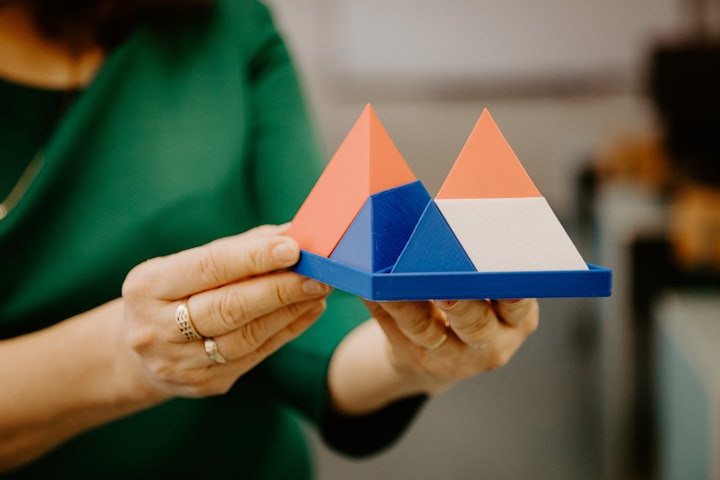Mastering the Art of Gestures Especially Hand Movement in Effective Classroom Teaching
Movement of Hands while Teaching

Importance of Gestures in Classroom Teaching
Effective communication plays a vital role in fostering a productive learning environment during classroom teaching. Together with other nonverbal cues hand gestures can greatly enhance classroom teaching. By incorporating meaningful movements of hands, teachers can establish a stronger connection with their audience.
Enhancing Communication through Nonverbal Cues
By adding gestures teachers can provide students with additional channels of communication. These nonverbal cues add meaning and engage students on a visual level. Research has shown that incorporating hand movements can enhance comprehension and memory retention among students. Similarly, it can also make classrooms more interactive and dynamic.
Creating a Dynamic and Engaging Learning Environment
The movement of hands during classroom teaching can create a lively and engaging learning environment. By using gestures, teachers can capture students' attention and make lessons more memorable. The visual impact of hand movements can stimulate interest and encourage active participation from students.
Establishing Rapport and Connection With Students
Hand gestures can also be used as a valuable tool for connecting with students. By employing appropriate gestures, teachers can create an inclusive classroom atmosphere. Gestures can convey empathy and foster a sense of trust between teachers and students. This connection can contribute to a more supportive and collaborative learning environment.
Types of Gestures for Effective Teaching
Teachers can utilize a variety of gestures to effectively communicate and enhance the learning experience for their students. Different types of gestures serve different purposes and can be strategically employed to convey information and engage learners.
Descriptive gestures to illustrate concepts
Descriptive gestures are used to visually represent ideas. These gestures can help students visualize abstract concepts. For example, a teacher may use hand movements to demonstrate the circular motion of the Earth around the Sun.
Emphatic gestures to emphasize key points
Emphatic gestures are used to highlight important information. These gestures can make the content more impactful. For instance, a teacher may use a sweeping gesture while talking about the significance of a historical event to convey the magnitude of the event.
Regulative Gestures to Manage Classroom Dynamics
Regulative gestures are used to maintain classroom order. These gestures may include raising a hand for quiet, or using a finger to indicate turn-taking. Similarly using a palm-down gesture to signal students to stop talking. Regulative gestures help teachers establish clear boundaries for developing a conducive learning environment.
Utilizing Hand Movements to Convey Information
Hand movements can be effectively utilized to reinforce verbal instructions. When combined with verbal communication, gestures can add clarity to the information being conveyed.
Incorporating Hand Gestures for Storytelling and Narrative
Storytelling is a powerful educational tool that captivates students' attention and engages their imagination. By incorporating hand movements into storytelling, teachers can bring the narrative to life. For example, a teacher may use hand gestures to mimic the flight of a bird and the expressions of characters in a story.
Using Hand Movements to Reinforce Verbal Instructions
When providing explanations, hand movements can serve as visual aids to reinforce the verbal message. Teachers can use gestures to demonstrate processes and show the relationship between different elements. For instance, a teacher may use his hands to showcase the proper technique for solving a math problem.
Demonstrating Spatial Relationships and Proportions Using Gestures
Concepts like spatial relationships or proportions may be better understood through visual representation. Hand gestures can be used to demonstrate the size, distance, or relative positions. For example, a teacher may use his hands to show the relationship between the Earth, Moon, and Sun.
Impact of Cultural Considerations on Gesture Use
Different cultures have unique interpretations and meanings associated with gestures. Teachers must be mindful of these cultural considerations to ensure inclusivity and avoid potential misinterpretations. For example, what may be considered acceptable in one culture may be perceived differently in another. Teachers must familiarize themselves with the cultural backgrounds of their students and be aware of any potential cultural nuances associated with specific gestures.
Addressing Potential Misinterpretations of Gestures in a Multicultural Classroom
To respect cultures, teachers need to avoid gestures that could be offensive or misunderstood. They should be open to feedback from students regarding their cultural interpretations and proactively address potential misinterpretations.
In conclusion, the movement of hands during classroom teaching plays a vital role in enhancing communication, creating an engaging learning environment, and establishing rapport with students. By incorporating various types of gestures, teachers can make their teaching more effective. Teachers need to consider the impact of cultural diversity and ensure respect to all students. Through mindful and intentional use of hand movements, teachers can significantly enrich the learning experience for their students.
Reference
1. Allan Pease - Body Language_ How to Read Others' Thoughts by Their Gestures-Sheldon Press (1984).pdf
2. David B Givens - The Nonverbal Dictionary Of Gestures, Signs & Body Language Cues.pdf
About the Creator
Miss Shamim Akhtar
I am a humble teacher, language specialist, and mentor dedicated to fostering growth through knowledge sharing. Let's explore the world of knowledge together in pursuit of excellence and professional development. #EducateInspireGrow






Comments
There are no comments for this story
Be the first to respond and start the conversation.